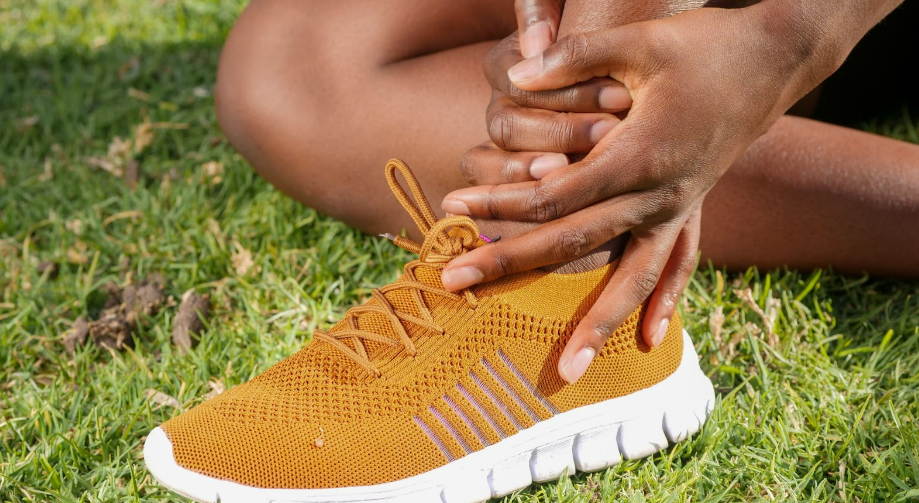Ever spent a series lot of long shifts on foot with minimal breaks? That will cause discomfort over time! Foot pain is never a pleasant experience for anyone, and there’s a long list of reasons why it can happen. It’s important to be able to identify these causes, so where can sufferers start?

Athlete’s foot
Staying clean in public spaces is important. Athlete’s foot is an extremely common and contagious fungal infection of the skin. It occurs when walking in damp areas such as a public pool or gym, and affects the toes with pain, blistering, peeling of skin, discomfort, and irritation.
The condition can spread to the groin, scalp, and hands if not treated effectively. The area must be kept clean and dry, have anti-fungal treatments applied, and be observed for signs of spreading.
Bunions
If footwear is causing pain, it’s time to go up a size or reconsider how it is adding pressure to the feet. Bunions are bumps that can form on the large toe joint and can cause tenderness around the big toe, pain when walking, a callus, or corn.
For treatment, bunion pads can improve the bunion over time, ice packs can be applied, and seeing a podiatrist can create custom shoe inserts to straighten the toe.
Heel Spurs
Heel pain typically shouldn’t be ignored. A heel spur is a pain around the heel bone that can result in inflammation or bone protrusion. Calcium deposits are the root cause of this.
Surgery can be needed in rare cases, but medication, cold compresses, and physical therapy are helpful.
Diabetic Neuropathy
Having diabetes can be detrimental to blood sugar levels, and it can affect the nerves in the feet as well. Symptoms include tingling, sensitivity, or loss of feeling altogether, which needs to be checked by a doctor or health professional. Keeping in check blood sugar at a safe level is crucial to preventing a case of diabetic neuropathy.
Blisters
Walking for extended periods can cause too much friction between areas of the feet. Blisters can form pockets of fluid, but it’s important to let them heal on their own. Popping them can disrupt the healing process. Keep the area bandaged and dry until the blister heals completely.
Ingrown Toenails
Ingrown toenails grow into the groove of the nail bed, and can become swollen, painful, red, or infected. This can happen due to nail trauma, cutting them too short, pressure from narrow shoes, and can even be genetic.
Treating and preventing this can include cutting them straight instead of an oval shape, washing with antibacterial soap and keeping the area dry, and wearing shoes that fit.
What can be severe cases of foot pain?
Ankle sprains
Always be mindful of wearing those stiletto heels when going out! Injury to the ligaments in the feet can result in an ankle sprain.
Twisting, rolling, or turning in unnatural positions can cause bruising to the elastic tissue, resulting in swelling and it being painful to touch. Weak muscles, loose ligaments, and slippery surfaces can also cause a sprain, so watch that step.
Treating the sprain depends on how severe it is, however, can include an ice pack for inflammation, wrapping the area with bandages, slowly using the muscle again, keeping the ankle elevated, or physical therapy.
Foot fractures
Falling from heights can do a lot of damage, so fractures are more severe than sprains and strains and often need more intensive medical care. What kind of foot fractures can occur?
– Toe fractures. These are easier to treat and can heal without the need for a cast.
– Ankle joint fractures. In comparison to toe fractures, this can be a lot more serious. Casts are usually needed, and sometimes surgery if bones are out of place.
– Metatarsal bone fractures. This fracture is in the center of the foot and typically only requires a stiff-soled shoe to support the healing process.
– Sesamoid bone fractures. These two circular bones are at the end of the big toe, and padded soles are best for this kind of foot issue.
Achilles tendon
This is most common in athletes or people who do vigorous exercise. The achilles tendon can become inflamed or ruptured if used too frequently, resulting in pain in the calf muscle and heel bone. If there’s pain, stiffness, or swelling, stretching, anti-inflammatory medications, massages and rest can benefit.
When should a doctor be called?
All in all, if foot pain is causing significant stress, preventing daily functioning, or treating the problem at home isn’t doing the trick, seeking a medical professional is highly recommended.
